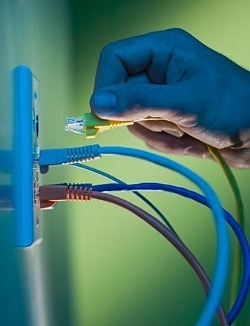Internet Time Server
A time server is a device connected to a network that has trusted time and responds to a computer request for information by using one of several time protocols. By far, the most commonly used protocol is the Network Time Protocol (NTP). Other protocols include the Simple Network Time Protocol (SNTP), Time and Daytime.
Generally what is meant by an Internet Time Server (or a Public Time Server) is a time server connected to the Internet that is available for public use. It responds to time queries from computers all over the world.
By installing NTP client software on each of your workstations, and then directing each of them to get their time from the Internet Time Server, you can keep your network synchronized. There are many Internet Time Servers available around the world for public use. To see a list go to the NTP Pool Project.
A better way is to use only one of your servers to get time from the Internet. You'll need to configure this as a Stratum 2 Server. Or, on a Windows network, you would use the Domain Controller. Then point all your workstations to the Stratum 2 Server / Domain Controller. (Click here to read about NTP Strata.)

Getting time off the Internet can work well and the NTP Pool is used by millions of clients around the world. But many IT Administrators want a dedicated time server installed inside their firewall. Why? There are several reasons but the main one is security. Using an Internet Time Server means you have to open a "hole" in your firewall (UDP 123 for NTP). This brings with it a risk of attack from the outside. With a time server inside your firewall you have control over all aspects of synchronizing your network and you can keep your firewall as intact as possible.
At EndRun Technologies we specialize in the manufacture of very high-quality NTP Time Servers. If you are an IT Administrator interested in maintaining a high level of security on your network then click here for more information.

